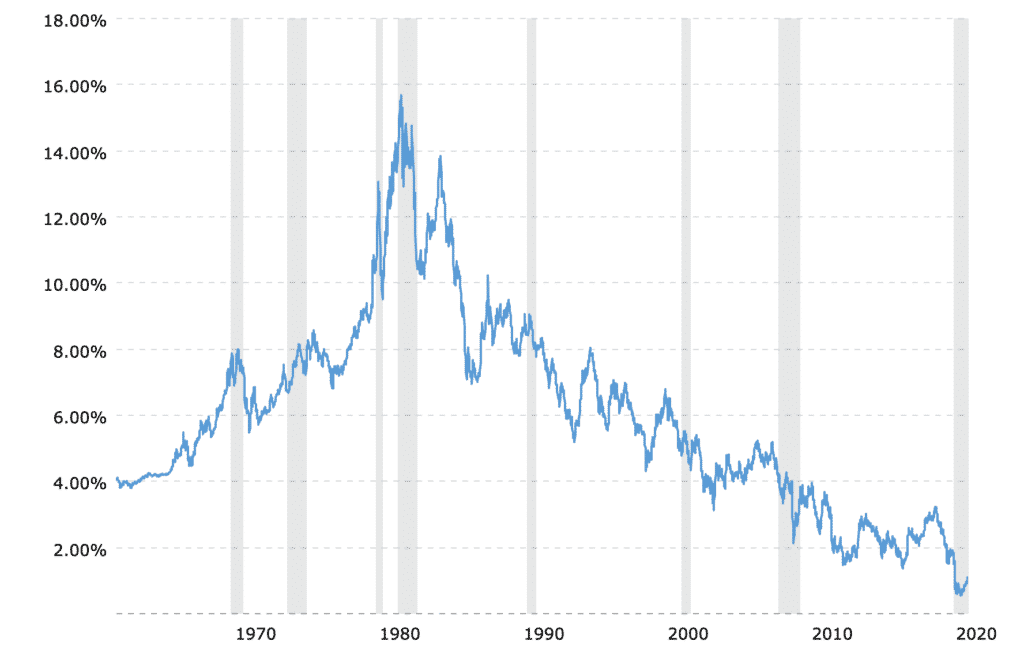Do you have a balanced portfolio? Do you periodically rebalance your asset allocation? How many financial horror stories are the result of being out of balance?
Allow me to tell you about one that will stick with me for the rest of my life. This one involves a senior partner of mine working in the Emergency Department.
Financial Horror Story
This physician had spent the bulk of his adult years serving people in their darkest hours. He’s a good man, a good physician, and a good friend. He had earned a lot of money in his years as a doctor and now that he was in his sixties, he was really looking forward to retiring. He had set the date and it was going to be in 2009.
During our shifts together, he’d talk to me about his plans to move to the coast and enjoy time with his friends and family. I was happy for him. But then came 2008 and his plans all went out the window.
My friend had done well investing in the stock market during the 1980’s and 1990’s. But unfortunately, he lost half of his nest egg when he went through an expensive divorce.
Instead of resigning himself to a more restrained retirement, he decided to work longer and invest aggressively. He threw caution to the wind ignoring his age and his desire to retire in the not too distant future. So he left the bulk of his retirement funds in the stock market.
The Great Recession and the stock market crash that came with it caught him off guard. He watched helplessly as his nest egg crumbled day after day. He tried to hold out, thinking it would come back up.
Ultimately, the fear of losing it all was too much for him. He caved and compounded his mistakes by selling those investments at market lows. To a large extent, he was wiped out. Now, in his seventies, he’s still working, even though he was supposed to retire more than a decade earlier.
His story breaks my heart. But it is a cautionary tale about the importance of a balanced portfolio, asset allocation, and why target-date funds were created.
What is a Target-Date Fund?
Wells Fargo Investment Advisors first created target-date funds back in the 1990’s. They are intended to be an all-encompassing investment product that invests in both stocks and bonds and reallocates and balances over time based on one’s retirement date.
For example, if you’re in your twenties with a retirement date 0f 2060, it might give you an investment allocation of 90% stocks and 10% bonds. This recognizes that young workers have decades of work ahead of them so they can take extra risk.
However, as time passes the fund rebalances regularly to decrease the risk from stocks and introduce more safety in the form of bonds. So by the time that same worker hits his forties, he may be invested in 80% stocks and 20% bonds. As he nears retirement, his allocation might be closer to 50% stocks / 50% bonds.
Volatility
Target-date funds can be helpful to those who aren’t good with asset allocation and rebalancing. They seek to prevent financial tragedies like the one that befell my friend. They heavily weight an investment portfolio with high risk, high reward stocks in the investors early years, while transitioning more toward safety and security incrementally over time.
It’s that way because they understand that fortunes can be lost and lives can be ruined by market volatility.
And asking the stock market not to be volatile is like asking water not to be wet. So removing more and more of that volatility over time makes sense. But are bonds really the best answer for having a balanced portfolio?
Are Bonds a Good Investment Now?
If you ask a bond investor what they like about bonds, you’re likely to hear one or more of the following things:
- Bonds provide stable income and diversification from the stock market
- Certain bonds can offer tax advantages and they are generally good for the preservation of capital
- They tend to be low-risk, highly stable investments.
Bonds aren’t sexy, but they are stable. So you can understand why target-date funds ratchet up the exposure to bonds as one gets closer and closer to retirement. In theory, this is a good idea for a balanced portfolio.
But there’s a major problem.
Bonds have been declining in value for decades. They’ve become so low, that in 2020 they didn’t even keep up with inflation. The Macrotrends chart below shows the 10-year treasury rate from 1962 through 2020. It’s important to note the downward trend from 1981 to today.
Source: 10 Year Treasury Rate – 54 Year Historical Chart
Consistently low yields like these can tempt some investors to chase yields from riskier investments. Given that fact, do target-date funds still make sense? Maybe for some, but others are reevaluating their asset allocation and balanced portfolio strategy.
For them, an investment with higher returns like stocks, but lower risk like bonds would be ideal.
Why Private Multifamily Real Estate is a Good Investment
Fortunately, direct private multifamily real estate has proven to be such an investment. And fractional investing has opened those investments up to individual accredited investors searching for a better answer in balancing their portfolio.
To better understand this, we should look at the research done by the financial planning company Nuveen. In their publication, “Direct real estate’s potential to improve returns and reduce risk for target date funds,” they show why adding direct real estate to target funds can be advantageous.
Evaluating 20-year data ending December 31, 2019, they found that direct real estate offered strong return fundamentals and low volatility in comparison to U.S. stocks, international stocks, U.S. bonds, and REITS. They also noted the diversification benefit of direct real estate along with its ability to hedge against inflation.
The Research
Ultimately, their 2020 report concludes:
Direct investment in real estate offers the potential to improve the outcomes of target date funds. A record of high returns, low volatility, and low correlation suggests this distinct asset class may provide superior portfolio diversification than public REITs…” -Nuveen – 2020
This adds to the growing body of research elucidating the benefits of adding direct real estate to a portfolio of stocks and bonds. A couple more examples include Jim Kramer’s magazine (TheStreet) in 2016 and J.P. Morgan Asset Managers in 2012.
“Over various real estate and economic cycles, core real estate’s Sharpe Ratio has been higher than both stocks and bonds. This shouldn’t be surprising, given its equity and bond-like features explained earlier. This makes core real estate perhaps the most valuable asset class.” -TheStreet – 2016
“…the reality is that investment portfolios focused on the ‘Big Two Traditionals,’ bonds and equities, are forcing investors to compromise – either by sacrificing return for lower volatility or enhancing returns at the expense of higher risk. Real estate may offer a way out. This is why we believe real estate is increasingly being viewed, not as an alternative, but as an essential portfolio component.” – J.P. Morgan Asset Managers – 2012
Conclusion
Target-date funds have grown in popularity. They allow investors an avenue to place money for retirement without having to worry about changing their allocation over time.
However, some worry that the decline in bond yields leave investors with anemic returns over time. As important as it is to gravitate toward safety and principal preservation, as one gets closer to retirement, must one compromise returns to achieve that stability?
Or is it possible to have both?
Can one reduce risk from their portfolio without sacrificing return? The answer is emphatically, “yes.” Studies show that adding direct fractional real estate to a portfolio of stocks and bonds increased the return and decreased the volatility. That was true whether the allocation came from replacing stocks, replacing bonds, or a combination of both.
More and more people are turning to real estate to truly achieve a balanced portfolio. Have you looked at your portfolio’s allocation lately? How much direct real estate do you have?
Author: Dennis Bethel

